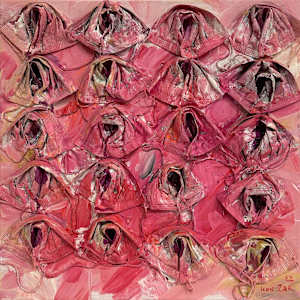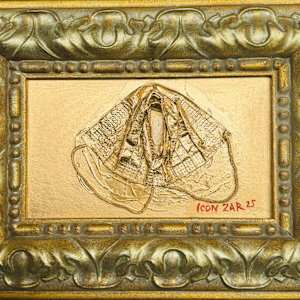Book for Millennial
Seahorses as Mediterranean Mickey Mouse.
Icon Zar has been exploring the subject of seahorses since 2019. They embody the frugality of our ocean and represent the smallest element of the sea. I choose seahorses as my artistic muse because they evoke images of aliens and the otherworldly. Interestingly, part of the human brain even resembles a seahorse. Additionally, the map of the Balearic Islands hints at seahorse shapes. For me, the seahorse is a symbolic animal of our subconscious—a representation of how a single, small idea can blossom into a broader, global vision.



Coffee Lovers
Coffee Lovers. Secret Garden.
"Golden Capsule" – The Coffee Cult(ure)
Empty coffee capsules symbolize the rituals of the urban elite — a refilling cycle of stimulation and status. We live in a generation addicted not only to caffeine but to the culture it represents. Coffee shops have become modern temples for networking, dating, freelancing, and identity-building.
“Let’s have coffee” is the new prelude — to dinner, to deals, to intimacy. It’s more than a beverage; it’s a lifestyle emblem, a social passport. The capsule, once discarded, becomes a relic of repetition — a perfect metaphor for the Millennial loop: constantly refilled, yet often empty.
Coffee has become the golden symbol of a generation chasing connection, productivity, and curated selfhood — one sip at a time.
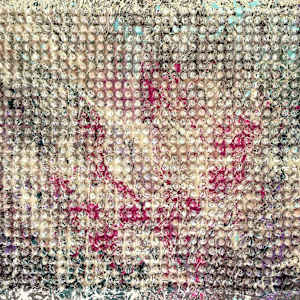

Golden Egg or Fertility Tourism.
Golden Egg or Fertility Tourism.
The golden egg symbolizes fertility tourism in Spain, reflecting the evolving reality of modern reproductive technologies. In today's world, fertility clinics offer the ability to choose a baby’s gender, color, and nationality, turning the act of creation into a customizable process. This shift in our understanding of life and choice is a powerful commentary on contemporary society, where technology now intertwines with nature, raising profound questions about identity, ethics, and the changing definition of family. This work invites viewers to contemplate how far we've come and what it means for our future.

Good morning Shakespeare
Coffee Lovers. Good morning Shakespeare
This piece explores the raw intersection between creativity and consumption. Smashed coffee capsules—collected from urban cafés and studio spaces—are arranged poetically across the canvas, embodying the chaotic yet inspired rhythm of the modern writer's life.
Each capsule becomes a relic of stimulation—captured moments of energy, imagination, and fleeting thoughts. They serve as metaphors for the countless cups fueling the creative process, especially within the context of contemporary nomads: writers, artists, and freelancers who inhabit the liminal spaces of coffee shops and co-working cafés in the world’s bustling cities.
Here, the coffee capsule becomes more than waste—it is a cultural symbol. A nod to the ritual of writing, the addiction to inspiration, and the urban rhythm that drives both.
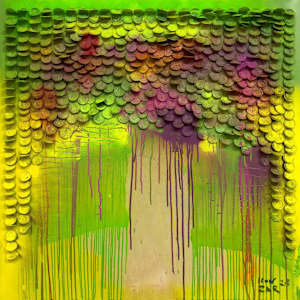
Iconic Artwork. Social Cocaine.
Social Cocaine.
“We were sold the dream of luxury, but bought into anxiety. Our addiction to status is mirrored in concrete – towers, listings, square meters. Property is the new currency of identity, and we’re all trying to belong in a world that’s priced us out.”
Icon Zar
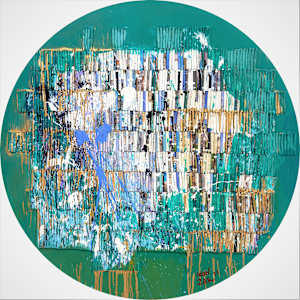
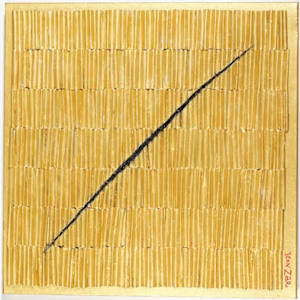
Official Garbage from Icon Zar Studio.
Artist Manifest
The artist’s studio is a womb.
It births beauty through mess,
truth through contradiction,
value through what the world calls valueless.

Polarising Art
Gossip Oysters
It´s 🦪 Artistic Symbolism:
Oysters = Luxury, secrets, hidden pearls of truth or lies. Also associated with indulgence and exclusivity.
Oysters of Illusion
In Icon Zar’s work, oysters become more than a delicacy—they are a critique. Once symbols of refined taste and status, they now serve as metaphors for a world obsessed with surface. Behind the sheen of sophistication lies a commentary on the fragile architecture of modern reputation, especially in the age of social media.
Through her signature lens of sarcasm and symbolism, Zar reveals oysters as carriers of whispered gossip, polished lies, and curated façades. What appears luxurious may, in truth, be toxic—beautiful shells concealing destructive narratives. In a society that consumes identity as quickly as it cancels it, these oysters are not to be savoured but questioned.
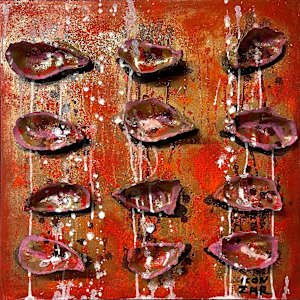
Polarising Art
TRASHFORMATION.
In this thought-provoking piece, medical masks are reimagined as a powerful metaphor for the Millennial Generation's experience—an era marked by digital saturation, hyper-personal branding, and luxury-driven consumer addiction. The work confronts the overwhelming overload of information and identity that defines our time.
Each mask symbolizes a fragment of the many personas—both real and constructed—that individuals adopt in today’s culture of social media performance. The vibrant, often saturated color palette echoes the visual language of platforms like Instagram, where life is filtered, curated, and constantly on display.
This is polarising art: a mirror held up to society, exposing both the seductive allure and the psychological consequences of endless reinvention. The piece speaks directly to the tension between authenticity and illusion in a generation navigating its identity in the digital age.
A timely and uncompromising reflection of our cultural moment.

Polarising Art
Hidden Roses
“Corona Time” is a polarizing reflection on the global pandemic as a psychological and emotional turning point. Rather than documenting the external events of the era, this work invites the viewer to confront their internal landscape—their reactions, anxieties, and resilience when faced with uncertainty and isolation.
This piece does not offer answers; it functions as a mirror. Each observer brings their own narrative to the work, projecting subconscious associations and personal experiences onto the visual field. The ambiguity is intentional—allowing the artwork to become a kind of psychological Rorschach test, triggering memories, fears, or moments of growth from a globally shared, yet deeply individual, crisis.
The artwork examines the mental mechanisms humans use to survive difficult times, showcasing different symbolic cases of coping strategies—some constructive, some destructive. Icon Zar explores themes of isolation and connection, mental looping, time distortion, and the dualities between chaos and clarity.
“Corona Time” invites us to observe not only the scars left behind but the evolution of human consciousness in the face of global stillness.
